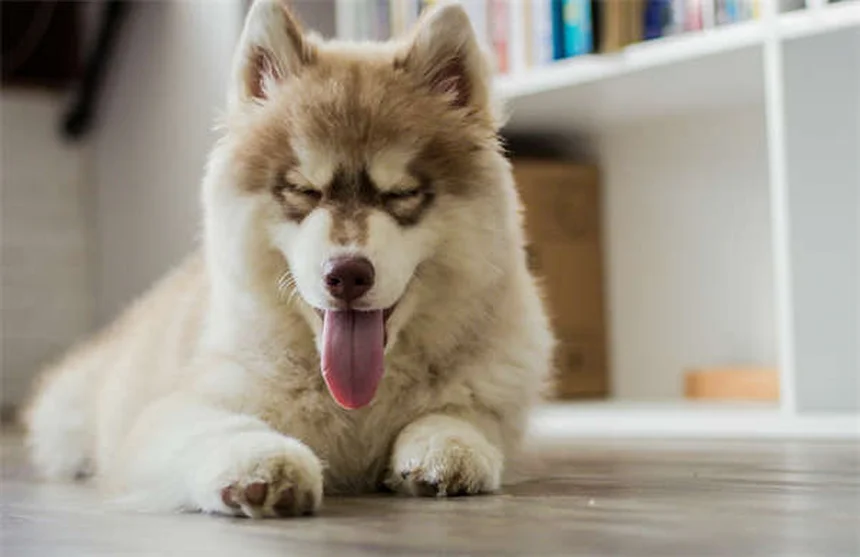What is tympany in chinchillas? The answer is simple but scary: it's a life-threatening gas buildup that can turn your fluffy friend's belly into a balloon within hours! I've seen too many chinchilla owners panic when their pet suddenly stops eating and develops a rock-hard stomach - that's when we know we're dealing with chinchilla bloat. The good news? You can spot the early warning signs and take action before it becomes an emergency. In this guide, I'll walk you through exactly what causes this dangerous condition (hint: it's usually our feeding mistakes), how to recognize it, and most importantly - how to prevent it from happening in the first place. Trust me, after reading this, you'll never look at your chinchilla's food bowl the same way again!
E.g. :Pregnant Cat Care: 7 Essential Tips for Healthy Kittens
- 1、When Your Chinchilla's Belly Goes Boom: Understanding Tympany
- 2、Beyond the Basics: Digging Deeper into Chinchilla Digestion
- 3、FAQs
When Your Chinchilla's Belly Goes Boom: Understanding Tympany
What Exactly Is This "Bloat" Thing?
Picture this: you're watching your fluffy chinchilla munching happily when suddenly - poof! - its belly looks like it swallowed a balloon. That's tympany (or "bloat" as we often call it), where gas builds up faster than a kid's bubblegum bubble. It typically happens when:
- You switch their food too fast (like going from salads to pizza overnight for humans)
- They eat enough to rival a competitive eater
- New mom chinchillas don't get enough calcium
The scary part? This isn't just uncomfortable - that gas buildup can become life-threatening quicker than you can say "chinchilla first aid." The bacteria in their gut go into overdrive, producing enough gas to inflate their stomach within 2-4 hours. Pro tip: Always transition food gradually over 7-10 days to avoid this digestive drama.
Spotting Trouble: Is My Chinchilla Bloated?
Here's how to play detective with your furry friend:
| Normal Chinchilla | Bloated Chinchilla |
|---|---|
| Active and curious | Lethargic like a teenager before coffee |
| Breathing normally | Huffing and puffing like they ran a marathon |
| Comfortable belly | Swollen tummy that's tender to touch |
You might catch them doing the "bloat ballet" - rolling or stretching awkwardly to relieve pressure. Funny to watch, but definitely not funny for them. If you see these signs, it's vet time - no waiting around!
 Photos provided by pixabay
Photos provided by pixabay
Why Does This Happen? The Usual Suspects
Ever wonder why your chinchilla's stomach turns into a balloon animal? Here are the main culprits:
1. Food Changes Gone Wrong
Imagine if you ate nothing but salads, then suddenly switched to deep-fried everything. Your gut would rebel too! Chinchillas need gradual food transitions - we're talking 10% new food mixed with 90% old food for several days.
2. The All-You-Can-Eat Buffet Effect
These little guys don't know when to stop. Left to their own devices, they'll eat like it's Thanksgiving every day. Portion control is key - about 1-2 tablespoons of pellets daily plus unlimited hay.
3. The Calcium Connection (For Mama Chins)
Nursing moms can develop hypocalcemia (low calcium), which is like running a marathon without proper hydration. This often hits 2-3 weeks after birth and can trigger bloat. Solution? Calcium supplements during pregnancy and nursing.
Getting Help: What the Vet Will Do
When you rush your bloated buddy to the vet, here's what might happen:
The Quick Fix:
The vet might insert a tiny tube or needle to let the gas escape - think of it like popping a balloon carefully. For nursing moms, they might get calcium through an IV (like an energy drink straight to their bloodstream).
The Recovery Plan:
After the emergency passes, your chinchilla will need a special "get well" diet. We're talking easily digestible foods, maybe some probiotics (the good gut bacteria), and lots of rest. No parties or stressful events during recovery!
Keeping the Belly Happy: Prevention Tips
Want to avoid midnight vet trips? Here's your prevention playbook:
1. The Right Fuel:
Feed chinchilla-specific pellets - not rabbit food, not guinea pig food. The difference matters more than you think! Good quality timothy hay should make up about 80% of their diet.
2. Slow and Steady Wins the Race:
Changing foods? Do it over 7-10 days. Day 1: 10% new food. Day 3: 30% new food. You get the idea. Their digestive systems are more sensitive than a gourmet chef's palate.
3. Watch Those Portions:
Here's a handy guide:
- Pellets: 1-2 tablespoons daily
- Hay: Unlimited (it's like their salad bar)
- Treats: Tiny pieces, maybe 2-3 times weekly
4. Special Care for Moms:
Pregnant or nursing chinchillas need extra calcium - think of it as their prenatal vitamins. Your vet can recommend proper supplements.
 Photos provided by pixabay
Photos provided by pixabay
Why Does This Happen? The Usual Suspects
If your chinchilla has had bloat before, they're more likely to have it again - kind of like how some people get food poisoning more easily. Here's how to keep them comfortable:
1. The Watchful Eye:
Check their belly daily - it should feel soft, not tight like a drum. Monitor their poop too (yes, we're talking poop inspection). Healthy chinchilla poop looks like tiny, uniform pellets.
2. The Safe Space:
Reduce stress - no loud noises or sudden changes. Imagine recovering from stomach flu while someone blasts heavy metal music. Not fun, right?
3. The Maintenance Diet:
Stick to the vet-approved food plan religiously. This isn't the time for experiments with new treats or foods.
When to Panic (And When Not To)
Not every gassy episode means disaster. Here's how to tell:
Mild Gas:
- Slightly reduced activity
- Maybe one skipped meal
- Normal poop production
Action: Monitor closely for 2-4 hours
Emergency Bloat:
- No eating for 6+ hours
- No pooping
- Labored breathing
- Pain when touched
Action: Vet immediately - this is an all-hands-on-deck situation
Fun Fact Break!
Did you know chinchillas can't burp or vomit? That's why gas builds up so dangerously - it's a one-way street in their digestive system. Nature's design isn't always perfect!
 Photos provided by pixabay
Photos provided by pixabay
Why Does This Happen? The Usual Suspects
Bloat might sound funny, but it's serious business for chinchillas. With proper diet, gradual food changes, and watchful care, you can keep your furry friend's belly happy and healthy. Remember - when in doubt, call your vet. It's always better to be the overprotective chinchilla parent than the regretful one!
Beyond the Basics: Digging Deeper into Chinchilla Digestion
The Gut Microbiome Mystery
Ever wonder why your chinchilla's digestion is so delicate? It all comes down to their gut microbiome - that's the community of bacteria living in their digestive tract. These microscopic roommates help break down food, but they're picky about their living conditions!
When the balance gets disrupted, it's like throwing a wild party in a library. The good bacteria get overwhelmed, and the bad bacteria start producing excessive gas. Did you know a chinchilla's gut contains over 500 different bacterial species? That's more diversity than your local zoo!
Exercise: The Forgotten Digestive Aid
Here's something most chinchilla owners overlook - movement keeps their digestion running smoothly. Think of it like this:
| Activity Level | Digestive Efficiency |
|---|---|
| Sedentary (less than 1 hour active) | Slow digestion, higher bloat risk |
| Moderate (1-3 hours active) | Optimal digestion |
| Hyperactive (more than 4 hours) | Possible stress on system |
I recommend setting up obstacle courses with wooden blocks and tunnels. Your chinchilla gets exercise, and you get free entertainment watching their acrobatics!
The Water Factor
You might not think about it much, but hydration plays a huge role in preventing bloat. Dehydrated chinchillas are like cars trying to run without oil - everything gets stuck and grinds to a halt.
Here's a quick test: pinch the skin on their back gently. If it snaps back immediately, they're hydrated. If it takes a second or two, break out the water bottle! I like to add a splash of unsweetened cranberry juice (just a drop or two) to encourage drinking during hot months.
Stress: The Silent Digestive Killer
Did you know chinchillas can get stress-induced digestive issues? It's true! Loud noises, new pets in the house, or even rearranging their cage furniture can trigger problems.
I once had a client whose chinchilla developed bloat after they painted their living room. The fumes stressed the poor guy out! Now we recommend temporary relocation during home renovations. Pro tip: If you must make changes, do them gradually over several days.
The Treat Trap
We all love spoiling our pets, but chinchilla treats can be tricky. Many commercial treats contain sugars or fats that disrupt their delicate digestion. Why risk it when nature provides perfect snacks?
Try these vet-approved alternatives:- Rose hips (the fruit of roses)- Dried chamomile flowers- Small pieces of dried apple (no seeds!)- Organic oat groats
Remember the golden rule: treats should never exceed 5% of their total diet. That's about one small piece every other day!
Seasonal Considerations
Chinchilla digestion changes with the seasons, just like our cravings for ice cream or soup. During summer, they tend to drink more and eat less. In winter, their metabolism slows down slightly.
Here's what I do for my herd:- Summer: More frequent hay changes to prevent mold- Winter: Slightly increased pellet portions- Spring/Fall: Extra monitoring during seasonal transitions
It's amazing how attuned they are to nature's rhythms - if we just pay attention!
The Poop Detective Game
Want to become an expert in chinchilla health? Start studying their poop! I'm serious - their droppings tell a complete digestive story.
Healthy poop should:- Be firm but not hard- Have visible hay fibers- Maintain consistent size and shape- Appear in generous quantities (50+ per day!)
When things go wrong, you might see:- Tiny, hard pellets (dehydration)- Misshapen clumps (digestive slowdown)- Sticky consistency (diet imbalance)
Keep a small notebook by the cage to track changes. Your vet will thank you for the detailed records!
Alternative Therapies Worth Considering
While traditional vet care is essential, some complementary approaches can help maintain digestive health:
1. Massage TherapyGently massaging your chinchilla's belly in clockwise motions can stimulate digestion. Use just one finger and very light pressure - think of it as a relaxing spa treatment!
2. Acupressure PointsThere's a point near the base of their tail that, when gently pressed, can help relieve gas. I learned this from an exotic animal specialist, and it's surprisingly effective for mild cases.
3. Aromatherapy (With Caution!)Some owners report success with very diluted peppermint oil in the room (never directly on the chinchilla). The scent may help relax digestive muscles. Always consult your vet first!
The Social Aspect
Here's something fascinating - chinchillas digest better when they're happy! Social interaction stimulates their systems in ways we're just beginning to understand.
If you have a single chinchilla, consider:- More interactive playtime- Positioning their cage where they can see family activities- Playing soft classical music when you're away
But remember - never house two chinchillas together suddenly. Introductions must be gradual to avoid stress-related digestive issues!
Final Thoughts From a Chinchilla Veteran
After years of working with these fluffy creatures, I've learned one universal truth: every chinchilla is unique. What works for one might not work for another, and that's okay!
The key is observation, patience, and willingness to adapt. Keep learning, keep loving your chinchilla, and don't be afraid to ask questions. The chinchilla community is full of passionate people eager to help!
E.g. :Bloating in Chinchillas | PetMD
FAQs
Q: How quickly can tympany become dangerous for my chinchilla?
A: Faster than you'd think! From my experience, tympany can go from "hmm, my chinchilla seems off" to life-threatening emergency in just 2-4 hours. The gas buildup happens when their digestive system slows down or stops, allowing bacteria to produce excessive gas. I always tell owners: if your chinchilla stops eating, isn't pooping, and has a swollen belly, don't wait - get to the vet immediately. Those first few hours are critical because the pressure can actually cut off blood flow to vital organs. Remember, chinchillas can't burp or vomit like we can, so that gas has nowhere to go except to keep building up painfully.
Q: What's the safest way to change my chinchilla's diet without causing bloat?
A: Great question! I've helped dozens of chinchilla owners through this process. The golden rule is slow and steady wins the race. Here's my proven 10-day transition plan: Start with 90% old food and just 10% new food for 3 days. Then move to 70% old/30% new for another 3 days. By days 7-10, you can finally do 100% new food. I know it's tempting to switch faster, but trust me - their sensitive digestive systems need this gradual adjustment. Pro tip: Keep a close eye on their poop during the transition - it's the best indicator of how they're handling the change!
Q: Can pregnant or nursing chinchillas get tympany more easily?
A: Absolutely, and this is something many owners don't realize! Nursing mothers are especially vulnerable to hypocalcemia-related tympany, which typically hits 2-3 weeks after giving birth. Here's why: producing milk drains their calcium reserves, which affects muscle function - including those crucial digestive muscles. I always recommend calcium supplements during pregnancy and lactation. If you notice a nursing mom chinchilla acting lethargic or off her food, don't chalk it up to normal postpartum behavior - get her checked immediately. Early calcium treatment can prevent a full-blown bloat episode.
Q: Are there any home remedies for mild chinchilla bloat?
A: While I never recommend skipping vet care for suspected bloat, there are a few temporary measures you can try while preparing to see the vet. Gentle belly massage (moving your fingers in small circles) can sometimes help move gas along. Keeping your chinchilla warm and quiet is important too - stress makes everything worse. Some owners have success with infant gas drops (simethicone), but you must consult your vet about proper dosage first. The most crucial home care? Withholding all food until you get professional advice. Remember: these are just first aid measures, not substitutes for proper veterinary treatment!
Q: How can I tell the difference between normal chinchilla gassiness and emergency bloat?
A: After working with hundreds of chinchillas, I've developed this simple checklist: Normal gassiness means your pet might be slightly less active but still eats a little and produces normal poop. Emergency bloat means no eating for 6+ hours, no pooping, obvious breathing difficulty, and pain when you touch their belly. Here's my rule of thumb: if you're asking yourself "Is this serious?", it probably is. When in doubt, err on the side of caution - tympany progresses so quickly that waiting to see if they improve often leads to tragic consequences. Your vet would much rather see a "false alarm" than a chinchilla that waited too long for treatment!



Discuss